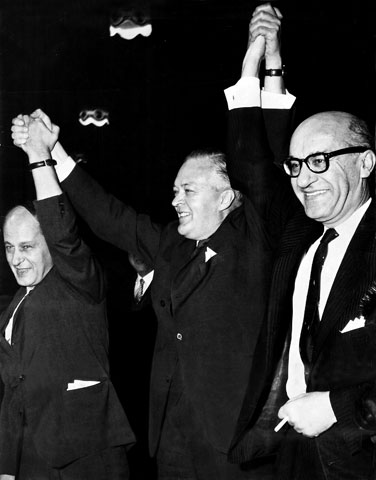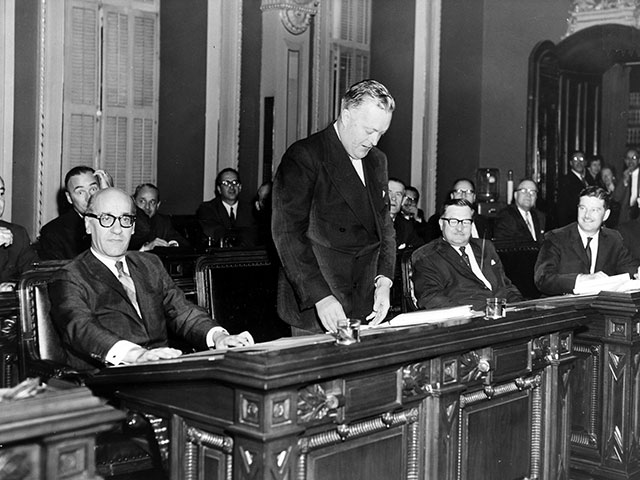Secondary Navigation Menu
Home > Events > Introduction > Beginnings: The Postwar Period
Beginnings: The Postwar Period
In the 1960s, history in Quebec was on the fast track. In less than a decade, Quebec experienced in-depth change politically, economically, socially and culturally. Paradoxically, this very eventful period fraught with affirmation and the liberation of society in Quebec was termed the Quiet Revolution, a description coined by an Anglophone journalist of the Globe and Mail, but just as quickly embraced by politicians and observers in Quebec.
Opinions are far from unanimous regarding the temporal aspect of the phenomenon. In this exhibit, the departure point selected is the famous "Désormais" (henceforth) uttered by Union nationale Premier Paul Sauvé the day after the death of Maurice Duplessis in 1959, marking the unequivocal turning point with the past. At the other extremity is 1968, the last year the Union nationale and Daniel Johnson were in power. But it is important to note that the roots of the Revolution were deeply imbedded in the past, as early as immediately following the Second World War and even in the 1930s, according to some researchers. The years 1968 and thereafter did not mark the end of change, but it was clearly obvious that things were winding down.
This exhibit provides an overview of the Quiet Revolution and its many ramifications. The phenomenon is presented from a broader perspective not confined to Quebec alone, because in the West as well as elsewhere, the world was fast changing during the decade between 1960 and 1970.
Our presentation is divided into eight sections highlighting the multiple facets of the Quiet Revolution. The first section addresses the period preceding the Quiet Revolution, the postwar period rich in events. The four following sections address, in order, the upheaval in the world of education, the reshaping of the role of the state, appropriation by Quebecers of major economic levers and Quebec's affirmation on the political scene. The sixth and seventh sections explore the cultural boom in Quebec in the 1960s and social facts that led to the emergence of new values. The last section deals with freeing women in Quebec from the stereotypes to which they had long been confined.




